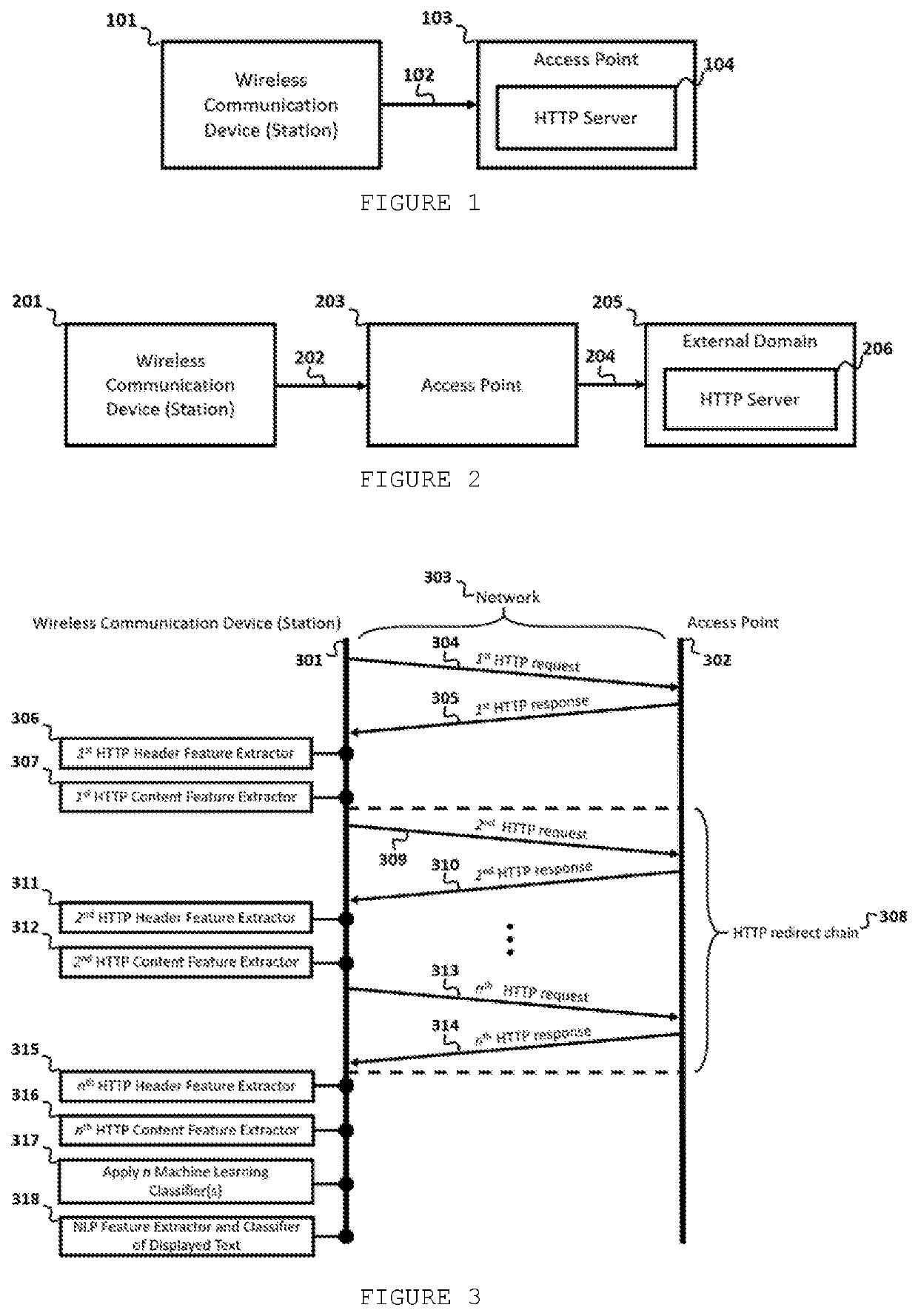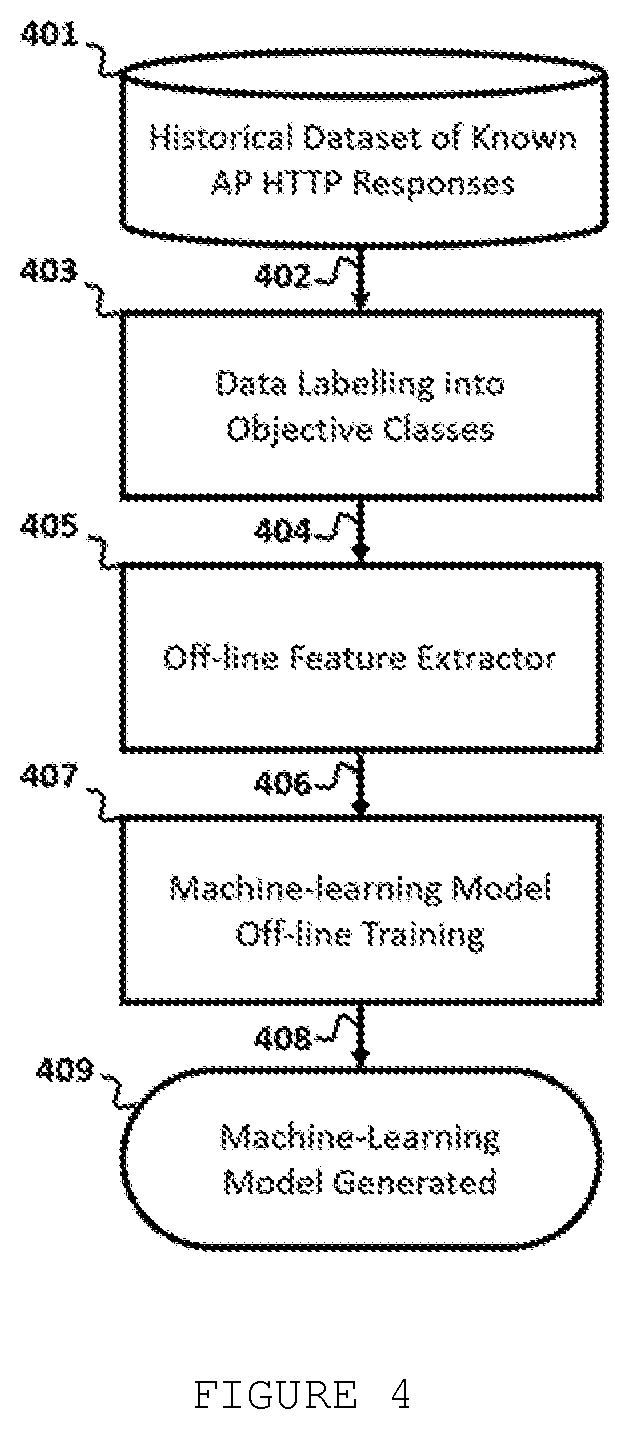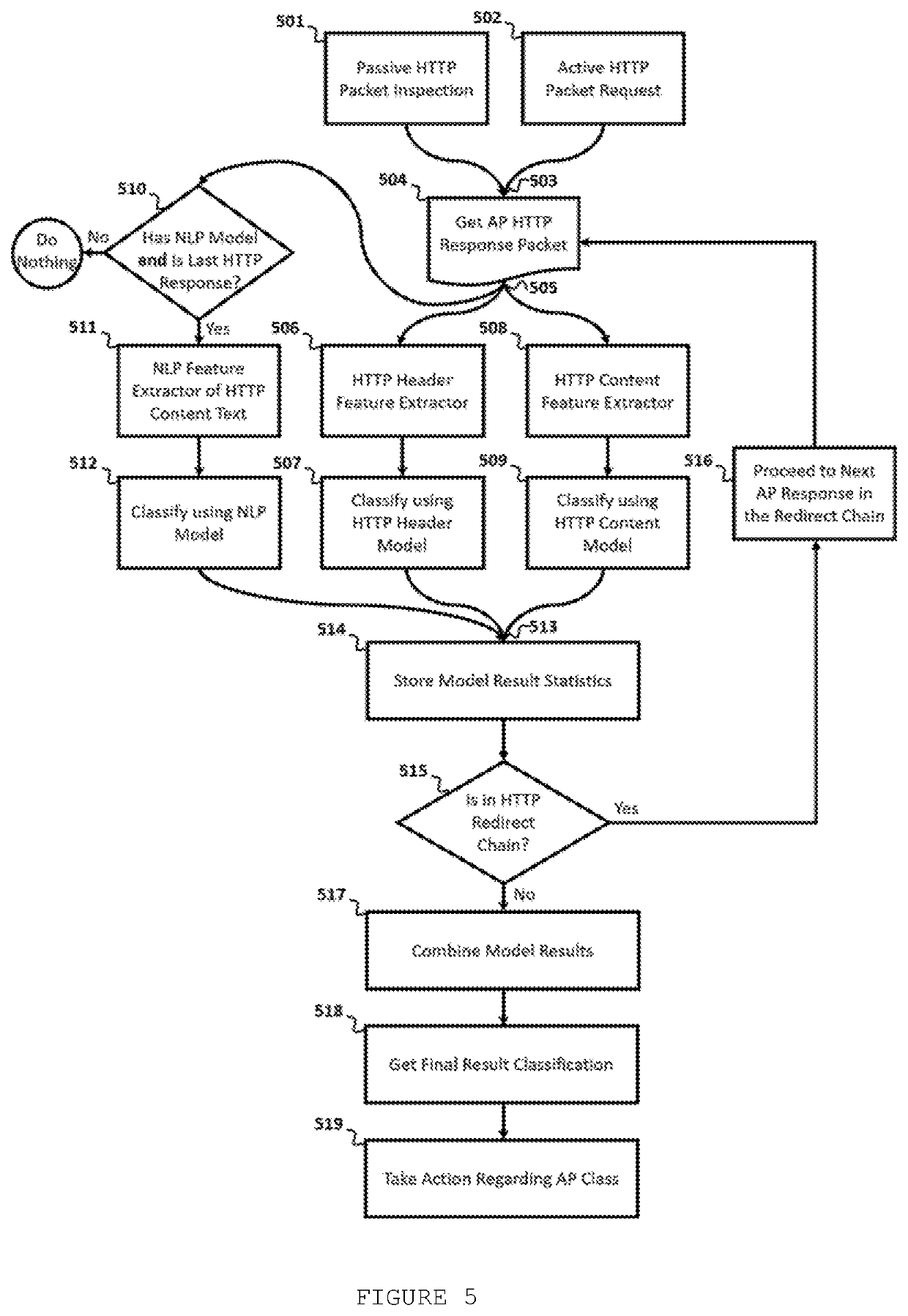Method for http-based access point fingerprint and classification using machine learning
a technology of access point fingerprint and machine learning, applied in the field of wireless communication, can solve the problems of inability of current existing technologies and market solutions to perform access point classification, inability of cloud-assisted solutions, and inability of device users to identify this type of attacks, etc., to assess the potential risk or trustworthiness of an ap.
- Summary
- Abstract
- Description
- Claims
- Application Information
AI Technical Summary
Benefits of technology
Problems solved by technology
Method used
Image
Examples
Embodiment Construction
New Features of Invention
[0067]Most advanced existing technologies for HTTP-based classification rely in assistance by cloud technologies to classify network HTTP services. This approach is not possible, however, when a device establishes a connection with an Access Point, which may lack of Internet connectivity. For example, if an AP contains captive portal authentication, it will limit connectivity before user perform some action, such as entering user credentials. Furthermore, such techniques also classify an HTTP server by actively probing the HTTP server from the client sending multiple HTTP packet requests, as few packets do not leverage enough information to accurately classify the HTTP service. Therefore, there is a lack of solutions that classify HTTP data with no cloud assistance, and at the same time, are accurate, stealth and suitable to resource-restrained devices.
[0068]To address this issue, the present invention takes advantages of a sequence of network events that oc...
PUM
 Login to View More
Login to View More Abstract
Description
Claims
Application Information
 Login to View More
Login to View More - R&D
- Intellectual Property
- Life Sciences
- Materials
- Tech Scout
- Unparalleled Data Quality
- Higher Quality Content
- 60% Fewer Hallucinations
Browse by: Latest US Patents, China's latest patents, Technical Efficacy Thesaurus, Application Domain, Technology Topic, Popular Technical Reports.
© 2025 PatSnap. All rights reserved.Legal|Privacy policy|Modern Slavery Act Transparency Statement|Sitemap|About US| Contact US: help@patsnap.com



